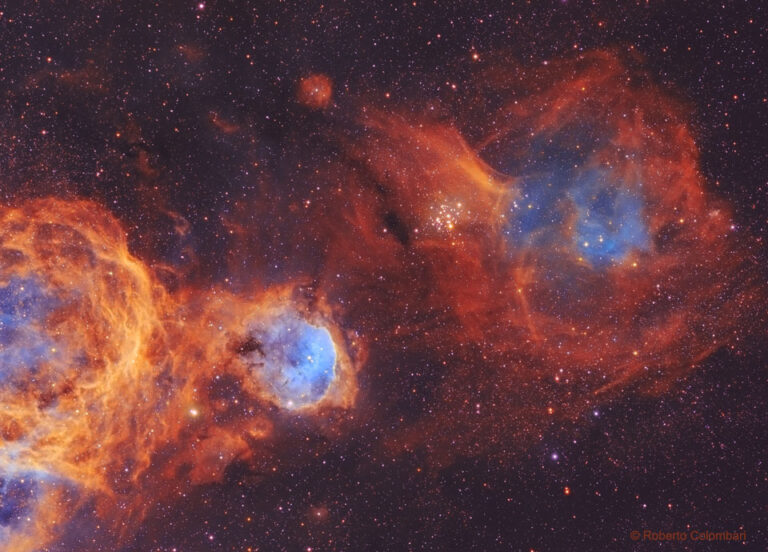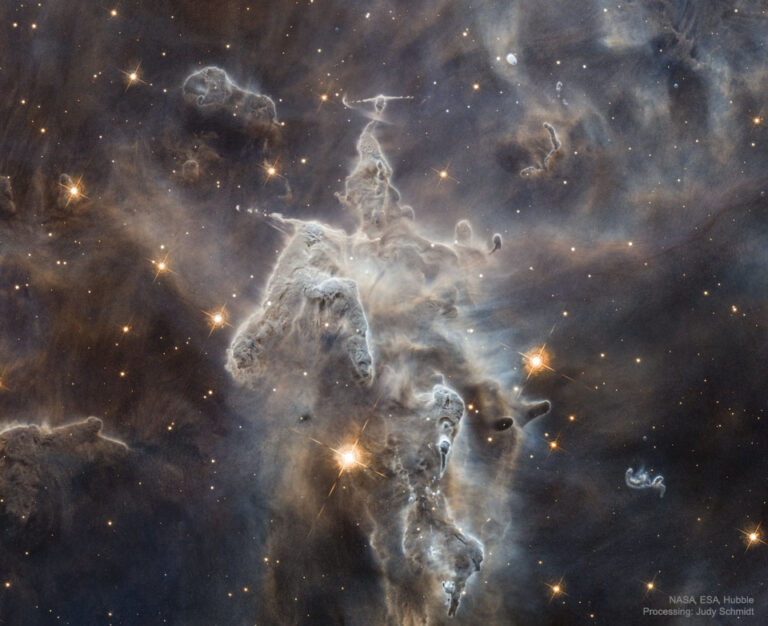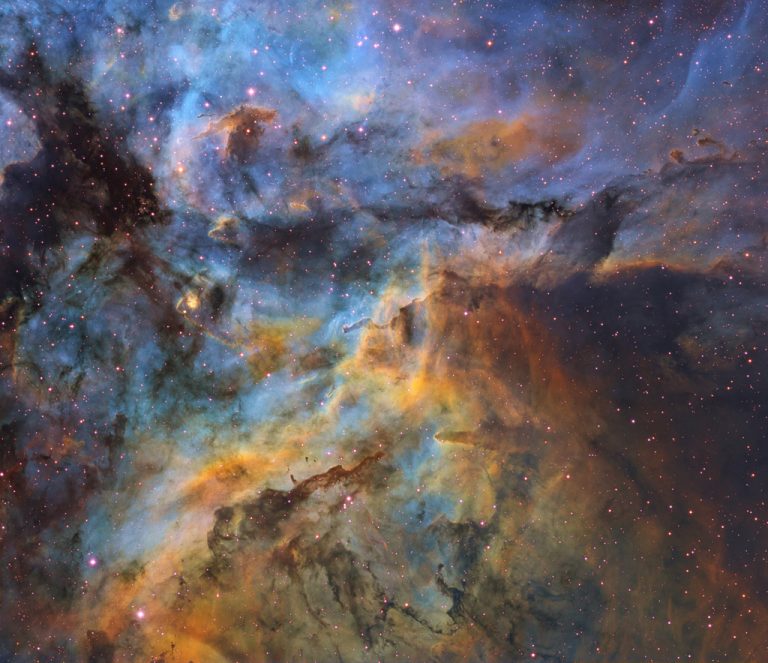船底座大星云的北缘
2022年1月31日 Carina Nebula North Image Credit & Copyright: Roberto Colombari Explanation: The Great Carina Nebula is home to strange stars and iconic nebulas. Named for its home constellation, the huge star-forming region is larger and brighter than the Great Orion Nebula but less well known because it is so far south — and because so much of humanity lives so far north. The featured image shows in great detail the northern-most part of the Carina Nebula. Visible nebulas include the semi-circular filaments surrounding the active star Wolf-Rayet 23 (WR23) on the far left. Just left of center is the Gabriela Mistral Nebula consisting of an emission nebula of glowing gas (IC 2599) surrounding the small open cluster of stars (NGC 3324). Above the image center…



